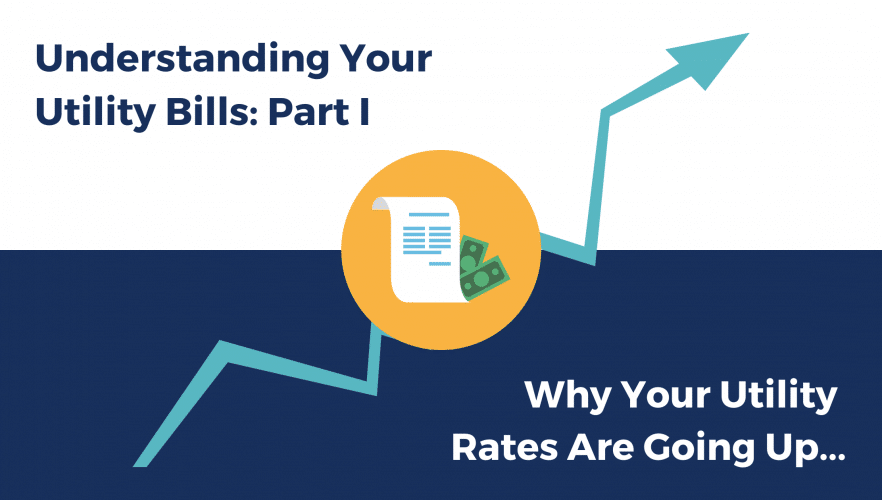
Understanding Your Utility Bills: Part I – Why Your Utility Rates Are Going Up…
Since 2009, the average retail price of electricity has increased over 13% despite declines in the costs of generating electricity (according to the EIA). So why isn’t your utility bill dropping accordingly?
Chances are you probably don’t have the time to scrutinize your energy bills to see exactly what you’re paying for. Thankfully, we’re here to do that for you.
Will rates continue to rise?
In order to understand why your rates are rising, it’s important to first understand what makes up your energy bill. Most charges on your residential energy bill will stem from either the delivery or supply of energy to your home. Delivery includes charges surrounding the transportation of energy from the utility company to your home, while supply consists of how much energy you use during your billing cycle. Additional fixed charges often include costs for service, billing, administrative fees, and franchise fees which are collected by local governments to fund operations in your area.
A more in-depth analysis of utility bills will be included in Part II of this feature.
What exactly am I paying for?
What most people don’t realize is that the transmission and distribution of energy are making up an increasing portion of their utility bills. The systems that transmit and distribute electricity to consumers have operation and maintenance costs, which include repairing damages to the systems from age, accidents, or extreme weather.
New construction and acquisition costs borne by utility companies are reflected in utility bills as well. For example, Entergy in New Orleans recently raised their utility rates due to failures at two existing power plants and construction at a third. The costs incurred by these failures included nearly $4 million in energy that needed to be purchased by Entergy to continue supplying the region.
So, even though the costs associated with energy generation have been falling, an inefficient and aging energy infrastructure requires greater annual overall costs of upkeep. The U.S. energy grid is in serious need of some refurbishment—and it’s costing us more each year.
In other words, it’s getting more expensive for utility companies to get you the energy that they generate. Their solution is to increase rates across the board.
What can I do about it?
Fortunately, there are alternatives.
Installing a solar energy system can greatly lower your reliance on outdated utilities. Now that solar energy is the cheapest source of energy in the world, energy freedom has never been more achievable. Generous government aid and financing options coupled with record setting efficiency have made solar a smart, accessible, and reliable mainstream investment.
Not only is the energy generated by solar panels free, but your overall costs of energy generation become far more predictable as they are not subject to the same fluctuations as utility electricity. In addition to lowering your utility rates and dependence on the grid, going solar has a direct positive impact on the environment and communities affected by energy injustice.
Free yourself from the burden of growing utility costs with the installation of a solar energy system.
Ready to learn more about going solar?
Call today for a free, no-pressure consultation.


